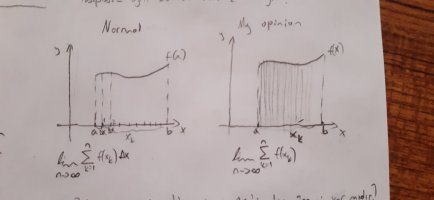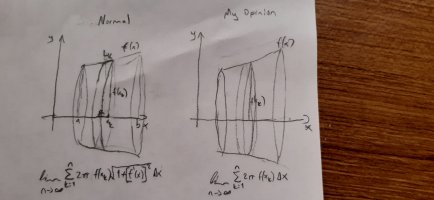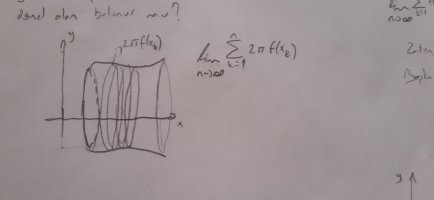Why do we multiply f(x) and dx to find the area under a function and get its infinite sum. If we just calculate the infinite sum of f(x) in a certain interval, wouldn't we get the same result?
Since there are infinitely many dx anyway, does dx have any significance. After all, dx will behave like a point. In another case, it will appear in the calculation of the surface area.According to me, we don't have to include the ‘Lk' of the disk we calculated into the calculation. When the calculation is taken to infinity, the truncated cone will become a cylinder. Therefore, it will be sufficient to multiply the length of the circle by dx.
In fact, instead of multiplying by dx, as I mentioned in my first question, it will be enough to just take the length of the circle to infinity.
I would appreciate if you explain where i am doing wrong.

Since there are infinitely many dx anyway, does dx have any significance. After all, dx will behave like a point. In another case, it will appear in the calculation of the surface area.According to me, we don't have to include the ‘Lk' of the disk we calculated into the calculation. When the calculation is taken to infinity, the truncated cone will become a cylinder. Therefore, it will be sufficient to multiply the length of the circle by dx.

In fact, instead of multiplying by dx, as I mentioned in my first question, it will be enough to just take the length of the circle to infinity.

I would appreciate if you explain where i am doing wrong.
